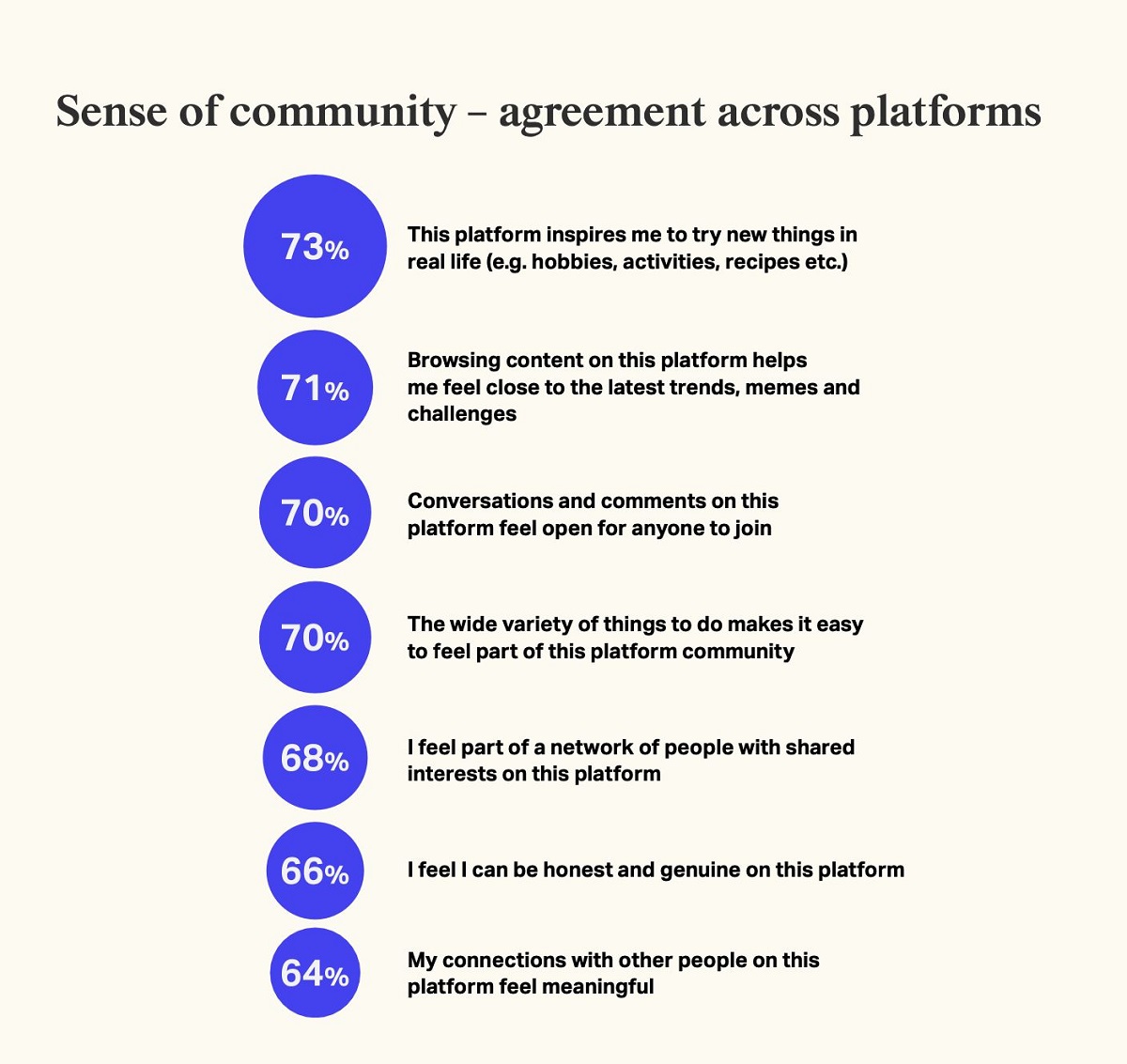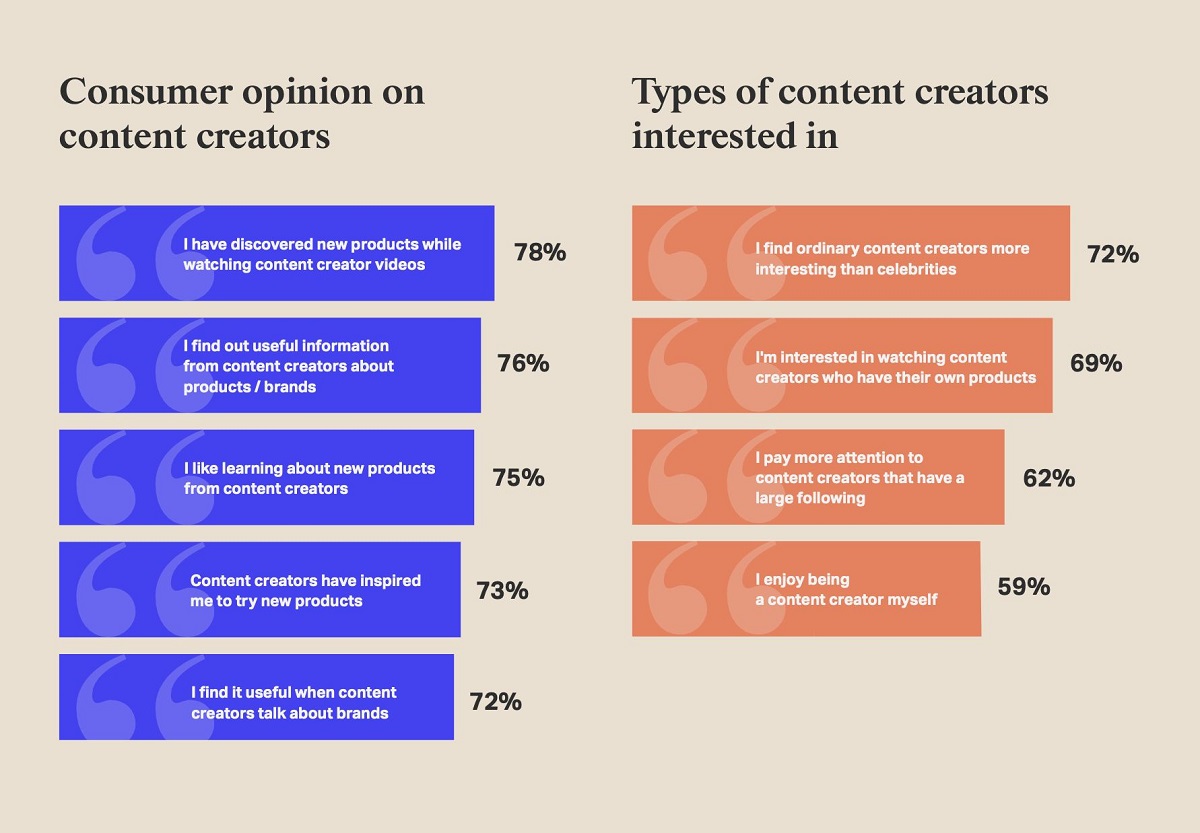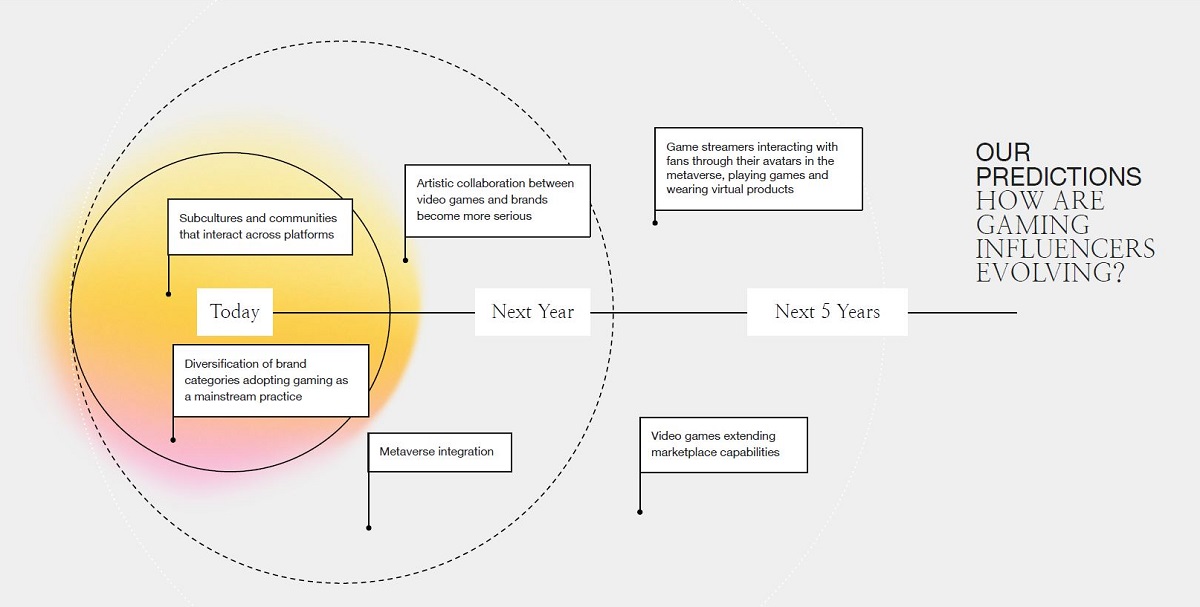
READ MORE: The Year of Digital Creators (Media.Monks)
Community is the new version of word-of-mouth, and the opinions of creators and their followers can boost or block sales.
That’s the verdict of marketing agency Media.Monks on the launch of its new report, “The Year of Digital Creators.”
The key to the door of the social media’s new era is “community,” and it is content creators who can unlock it.

“Web3 is slowly but surely becoming a bigger dot on the horizon, paving the way for an internet era that’s governed by the collective,” says Media.Monks.
It is the collective or the community which will own, run, and be rewarded in the creator economy.
It is not as if “influencers” have gone away or been transitioned into “creators.” The distinctions are highly nuanced and subjective, but their combined impact has rapidly expanded into a creator economy that Media.Monks says is already worth $20 billion.
CRUSHING IT IN THE CREATOR ECONOMY:
The cultural impact a creator has is already surpassing that of traditional media, but there’s still a stark imbalance of power between proprietary platforms and the creators who use them. Discover what it takes to stay ahead of the game with these fresh insights hand-picked from the NAB Amplify archives:
- The Developer’s Role in Building the Creator Economy Is More Important Than You Think
- How Social Platforms Are Attempting to Co-Opt the Creator Economy
- Now There’s a Creator Economy for Enterprise
- The Creator Economy Is in Crisis. Now Let’s Fix It. | Source: Li Jin
- Is the Creator Economy Really a Democratic Utopia Realized?
Influencers are presented as growing their audience through creating more personal content — content that shows a curated lifestyle and the brands that align with it. Importantly, “they connect with their audience through authenticity and relatability, showcasing their talents, passions, and a peek into their personal lives.”
By contrast, creators lean into their own talents or a specific topic, creating content that’s entertaining, educational or engaging enough to grow a strong community.
Both are developing content with the aim to entertain, educate, surprise, or engage their followers and steadily grow their community/fandom.
Communities are More Important than Followers
By Abby Spessard
Followers and fans don’t want just the one-sided conversations. And neither do influencers. They’re all looking towards community chat apps, which offer “more intimate, community-oriented experience than traditional social networks.” The Washington Post’s Taylor Lorenz talks with influencers, creators, and the founder of burgeoning chat platform Geneva about the benefits of forming communities instead of chasing follower counts.
Lorenz introduces New York City content creators Kate Glavan and Emma Roepke, both 23 and best friends, known for skewering the wellness industry on their Instagram meme page and popular podcast, Sea Moss Girlies. ” The two created their own “home,” or community, on Geneva — a platform that “allows groups of people to talk in different topic-oriented rooms, similar to chat apps like Slack or Discord.” Here, members can interact free from the pressure of follower counts and likes.
“Glavan and Roepke have an easygoing rapport with members,” Lorenz writes. “They exchange music and TV recommendations in long threads, they marked National Eating Disorder Awareness Week by swapping personal stories of their mental health struggles and even met up with members for an IRL picnic.” So how are these chat rooms different from platforms like Twitter, TikTok, or Instagram?
“It’s more about what the community wants instead of just both of us posting,” Glavan says. “On TikTok and Instagram… there’s a hierarchy there. On Geneva, Emma and I are present, but it’s not all about us.”
Lorenz describes how creators are setting up these apps to connect privately and directly with their communities. “The toxicity and poor moderation on massive, open social networks have pushed them into these more controlled spaces, where they can speak freely without worrying about bad faith attacks.”
Geneva’s founder, Justin Hauser, comments that the members of the communities don’t bond over content, but instead via conversations. “Geneva has no town square,” he says. “It has no follower counts or likes. What it’s built to do is give people an online place to hang out with their communities every day and feel like they know who they’re talking to.”
This form of social interaction is important for creators because they “allow a deeper connection with both the content creator and others in their fandom,” Lorenz explains. “For big influencers, building a Geneva home, Discord server, or Telegram channel strengthens their ties to their audiences.”
They’re also being used to strengthen ties on the business side. Nadya Okamoto, co-founder of a period-care brand called August, oversees a 3,000-person community on Geneva. “There’s a difference between an audience and a community,” Okamoto said. “An audience is where one person has a microphone and you’re speaking to a bunch of viewers; a community is when everyone has a mic and we’re all talking to each other. A lot of brands use it to describe their social media audience. They say, ‘Oh, our community is 10,000 people.’ But they mean they have 10,000 followers.”
Fostering an online community directly impacts businesses; not only does it provide the opportunity for instant feedback, but “incorporating community feedback builds loyalty among consumers and allows creators to more effectively market to their audiences,” Lorenz says. It all circles back to the internet’s roots of connecting with people. And the users of Geneva agree.
Hauser recognizes that “people are fed up and they’re seeking salvation in safer spaces… places where they know they’re not being tricked to play someone else’s game.”
READ MORE: For creators, community is the new follower count (The Washington Post)
But creators are not the next generation of influencers.
“There’s a fundamental shift in the way creators monetize their activities to provide an independent and flexible income that’s not at the mercy of social platform algorithms or related to building a huge following,” Media.Monks claims. “Creators provide content and expertise on all kinds of niche interests to engaged communities.”

The group’s advice to brands looking to build community is: “make funny and entertaining content, demonstrate what you stand for, invent new memes and challenges, and share information. Belonging, information-sharing and demand for a product are all stimulated by the powerful influence that community can wield.”
Gaming is identified as a leading source of online community among Gen Z in particular. Collaborations between brands and gaming platforms are not just becoming more common, but also more serious with the former owning virtual spaces inside video games or even producing their own unique, artistic gamified experiences.
Community-building is central to the gaming experience. “Communities are being formed in and around gaming, which is fascinating,” says Funs Jacobs, gaming category lead for Media.Monks. “However, many brands don’t have a strong community at the moment. They may have fans, but they don’t have that 360-degree relationship with their consumers — and that is something that needs to change in order for brands to survive.”

Another way of building engagement among the gaming community is to livestream. Popular game streamers are interacting and connecting with fans on platforms like Twitch, Instagram, and YouTube.
“Brands want to reach audiences far and wide, whereas streamers want to be sponsored and earn an income from doing what they love — it’s a win-win. Moreover, they provide a very useful space for brands to gather insights and feedback,” Jacobs says.
By getting to know the digital community and looking closely at its behaviors, preferences and needs, brands have a “unique opportunity” to deliver tailored products, services, and content.
READ MORE: The Creator Economy, A True Game-Changer (Media.Monks)
In other words, the digital community is an innovative, effective, and fast-paced way for brands to sell directly to their consumers in the social media space.


